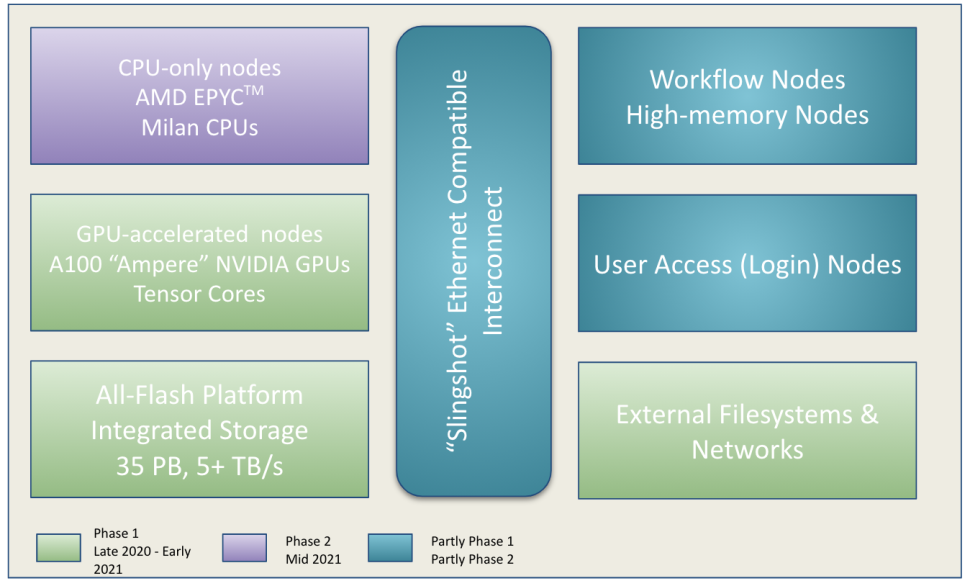Perlmutter is the most powerful computer in the world dedicated to artificial intelligence. This supercomputer will be launched at the Berkeley Laboratory in the United States and will be used for scientific research. internal? Hewlett Packard Enterprise Engineering, AMD Processor and 6000 NVIDIA A100 GPUs.
With the cooperation of various technology brands, the institute has the second most powerful supercomputer in the world, surpassing only Tomitake in Japan. Of course, this is the strongest point when it comes to AI data processing.
According to a statement from NVIDIA, supercomputers can reach 180 petaflops (
2 petaflops for Tomitake), which ranks them directly as the second most powerful supercomputers in the world. Also, under additional performance conditions, AI processing can achieve all four ExaFLOPS. Inside the computer
AMD EPYC 7763 6 processor High-end cores stand out in addition to the 6,000 NVIDIA A100 GPUs mentioned above. HPE’s CrayShasta architecture was used to bring things together. However, there are some interesting details. It begins in two stages.

There are 1,536 knots in the first phase. Inside each is a 6-inch AMD EPYC 7763 processor cores with 256GB DDR4-SDRAM and four NVIDIA A100 GPUs 0 GB In this first phase, the supercomputer achieves a throughput of 60 PetaFLOPS FP6.
When the second phase is completed by the end of, will add 3,072 nodes with AMD EPYC 7763 processors and 512GB of memory per node. When the second phase is implemented, it should reach 120 petaflops of performance. The total throughput of the entire supercomputer will be 180 petaflops and up to exaflops FP16 for AI applications.
6000 How to use NVIDIA A100 GPU
Simulation. This is primarily what the Perlmutter supercomputer does. It is expected to be the fastest system on the planet when it comes to artificial intelligence workloads. In one of his first projects, he will be involved in the construction of the largest 3D map of the universe ever visible.
In addition to the spatial mapping project, the researchers are using supercomputers to study elementary particle interactions. Such supercomputers can accurately simulate the behavior of atoms on a slightly longer time scale than is currently achieved.